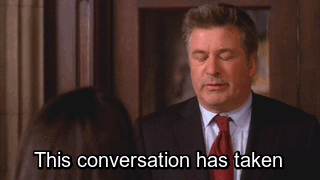1) Use the flash back technique sparingly: Unless you a
When I completed my first book, I tried to make sure that all of my characters were fully developed. I created biographies for each of them using templates that I found on the Internet. These templates included sections for physical attributes, motivations, character traits, family background and other biographical details.
In my Frank Rozzani Detective Series, the main character has events in his back story that motivate who he is in the present time. These events pushed him into his career as a private detective and forced him to relocate. My first draft of the book had two full chapters devoted to Frank’s back story. I thought that readers would want all of this rich detail about his former life in Syracuse, NY along with his family history and the tragic events that brought him to the present day in the story. I incorporated this as a flashback. I was excited about it and sent it off to my editor.
When I received my editor’s comments, she slashed nearly all of the flashback chapters from the book. She said that it was all unnecessary and that I should be more stingy with the back story and spread it out throughout this book and the ones that would follow. It was a blow to my ego at first, but in hindsight, she was absolutely right.
After this eureka moment, I started looking at the way other writers used back story in their work. Some of them, like John D. MacDonald and Elmore Leonard use back story very sparingly and only reveal details when they are relevant to the current story. Others like Dean Koontz and, in some instances, Stephen King, use back story to develop their characters into living and breathing people full of complexity. I wanted to land somewhere in the middle and I think, with my first book, and to a greater degree, my second book, I have succeeded somewhat.
Have I mastered the use of back story? Absolutely not. I don’t think, as writers, we ever truly perfect any aspect of our writing. I thought, however, that I would post some tips that I use and that might help you as you look for balance in sharing character background information in your work.

re writing a book about time travel, you can really confuse your reader by jumping back and forth in your book. If your reader starts to wonder where and when the story is taking place, you might lose them. If you must use flash back, consider doing it in short doses, such as in a character’s dream. If you have to devote a chapter to it, be certain that the details are relevant to the story.

2) Consider giving past information as part of a conversation: This technique might involve a character telling their story to another character as part of a conversation. You want to avoid long monologues by your main character. You should try to make the reveal of the back story more of an interactive scene between the characters.

3) Incorporate portions of background details as a summary: Many authors use this technique to indicate what has happened in the past. They will reveal details in the character’s background with single sentences. Here is an example:
“As an attorney, John vigorously went after cigarette manufacturers. He wanted nothing more than to be victorious in cases against them while securing high punitive damages for his clients. This passion was fueled by the deaths of both of his parents from lung cancer.”
 4) Make the back story believable and realistic: As an author, you should think out the main points of your main characters’ back story. Don’t invent events just to suit your story. The back story should be grounded in some type of reality. You can’t have your character defeat their enemy with a complex form of martial arts if studying the techniques do not make sense in the characters background. Maybe he or she was in special forces or spent time in Asia.
4) Make the back story believable and realistic: As an author, you should think out the main points of your main characters’ back story. Don’t invent events just to suit your story. The back story should be grounded in some type of reality. You can’t have your character defeat their enemy with a complex form of martial arts if studying the techniques do not make sense in the characters background. Maybe he or she was in special forces or spent time in Asia.

5) Create a situation where the information needs to be known: In my first book, Frankly Speaking, the main character is single and is being pursued by a beautiful, successful woman. Despite her obvious hints, he resists her. When things finally come to a head, he reveals the details of his wife’s murder to her and explains his reluctance to get into a new relationship. This is a case where the reader was aware of some of the details, but other characters were not.
I hope that these tips about back story were helpful to you. I learn more about the different methods to reveal character background details as I read more and apply the techniques that I’ve learned to my own writing. Those things that motivate your characters might be the things that keep your readers interested, especially if you have multiple works that feature the same cast of characters.

Reblogged this on Anna Dobritt — Author.
LikeLiked by 1 person
Thanks, Anna
LikeLike
Reblogged this on Stevie Turner, Indie Author. and commented:
Some good advice from Don Massenzio.
LikeLiked by 1 person
Thanks for sharing this.
LikeLiked by 1 person
You’re welcome.
LikeLiked by 1 person
I am impressed with how you and other writers are able to consider these types of factors and hone your craft. It is such difficult work that it must be one’s passion. Great post, Don!
LikeLiked by 1 person
Thanks.
LikeLiked by 1 person
Fantastic advice, thank you so much. I find I am too interested in the back story. I have stopped myself from including a useless prologue and I am having to remind myself that most of the back story doesn’t need to be in the book (Sci fi).
LikeLiked by 1 person
I’m glad you found it useful. Thanks for the kind words.
LikeLiked by 1 person